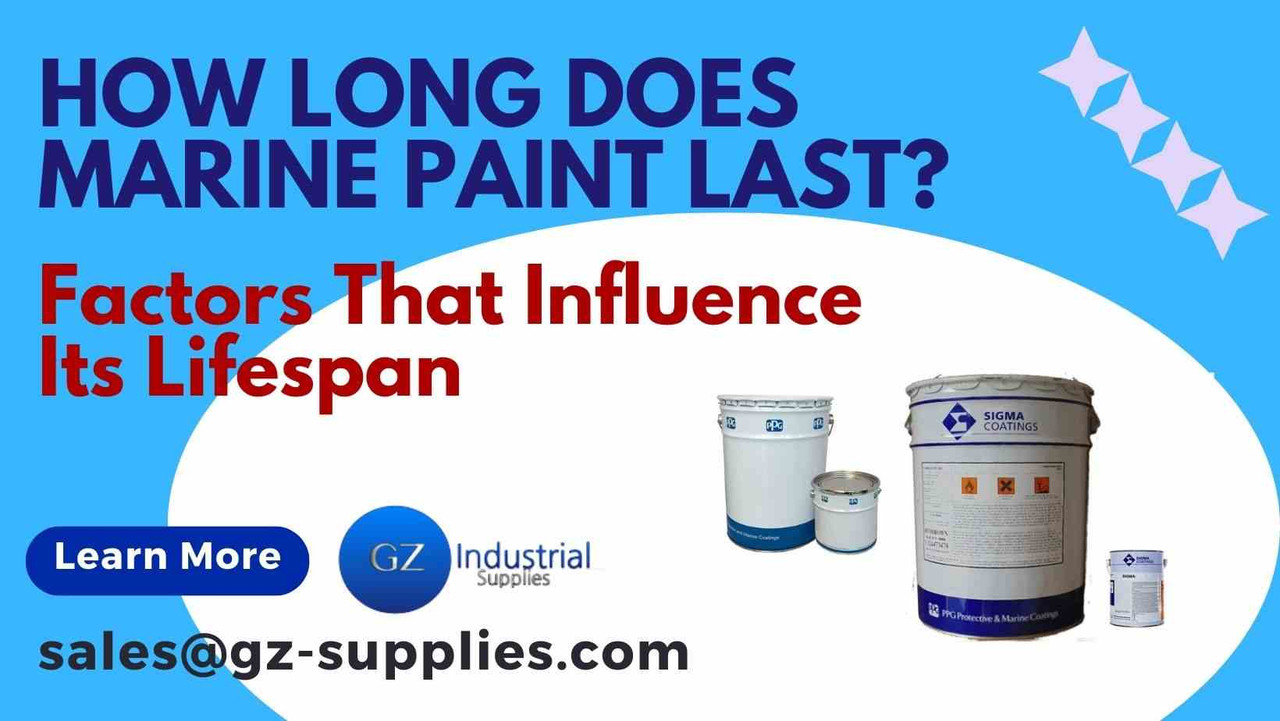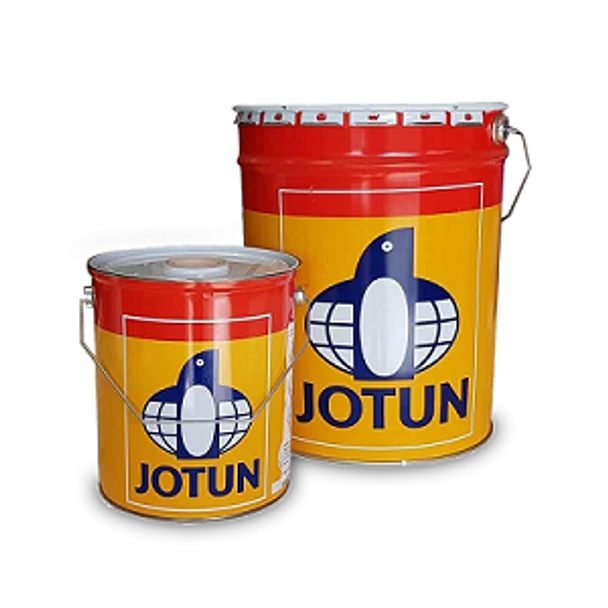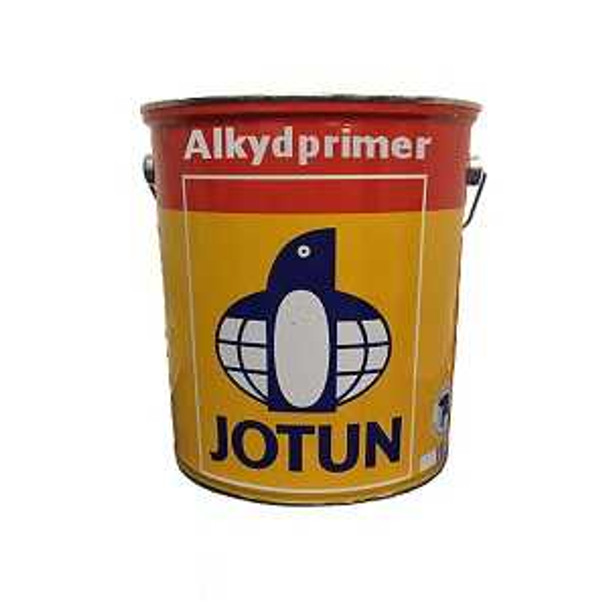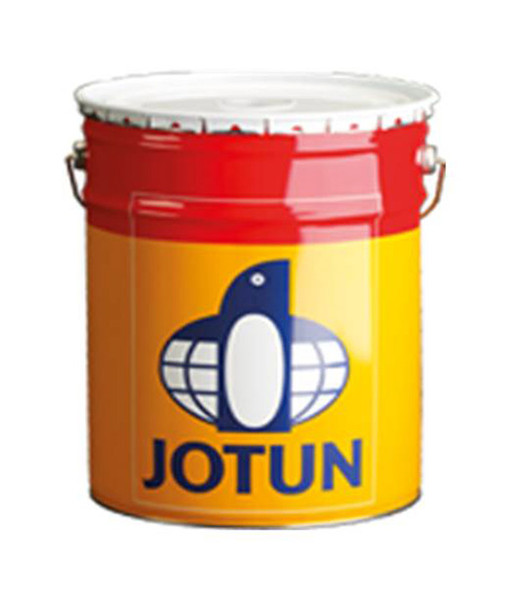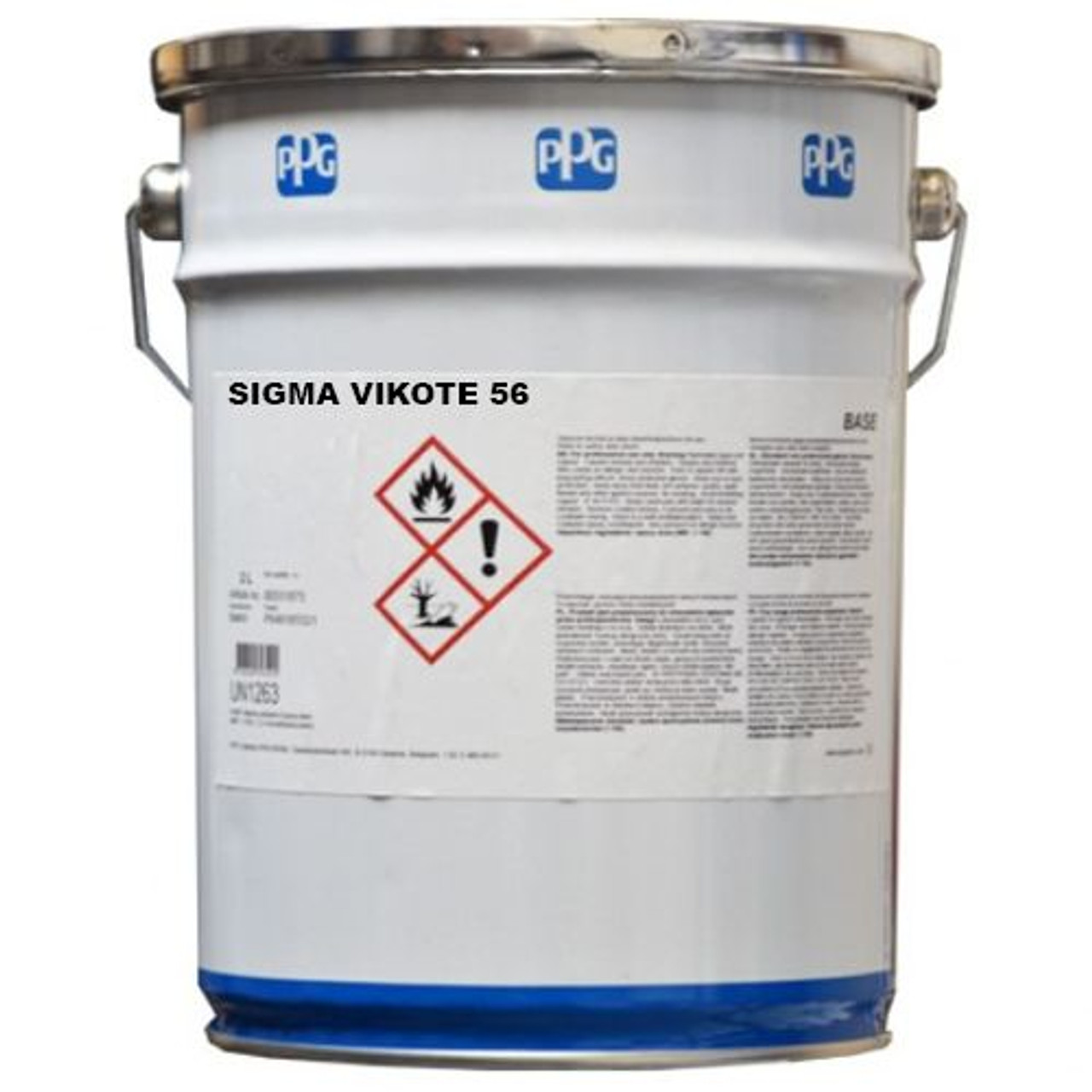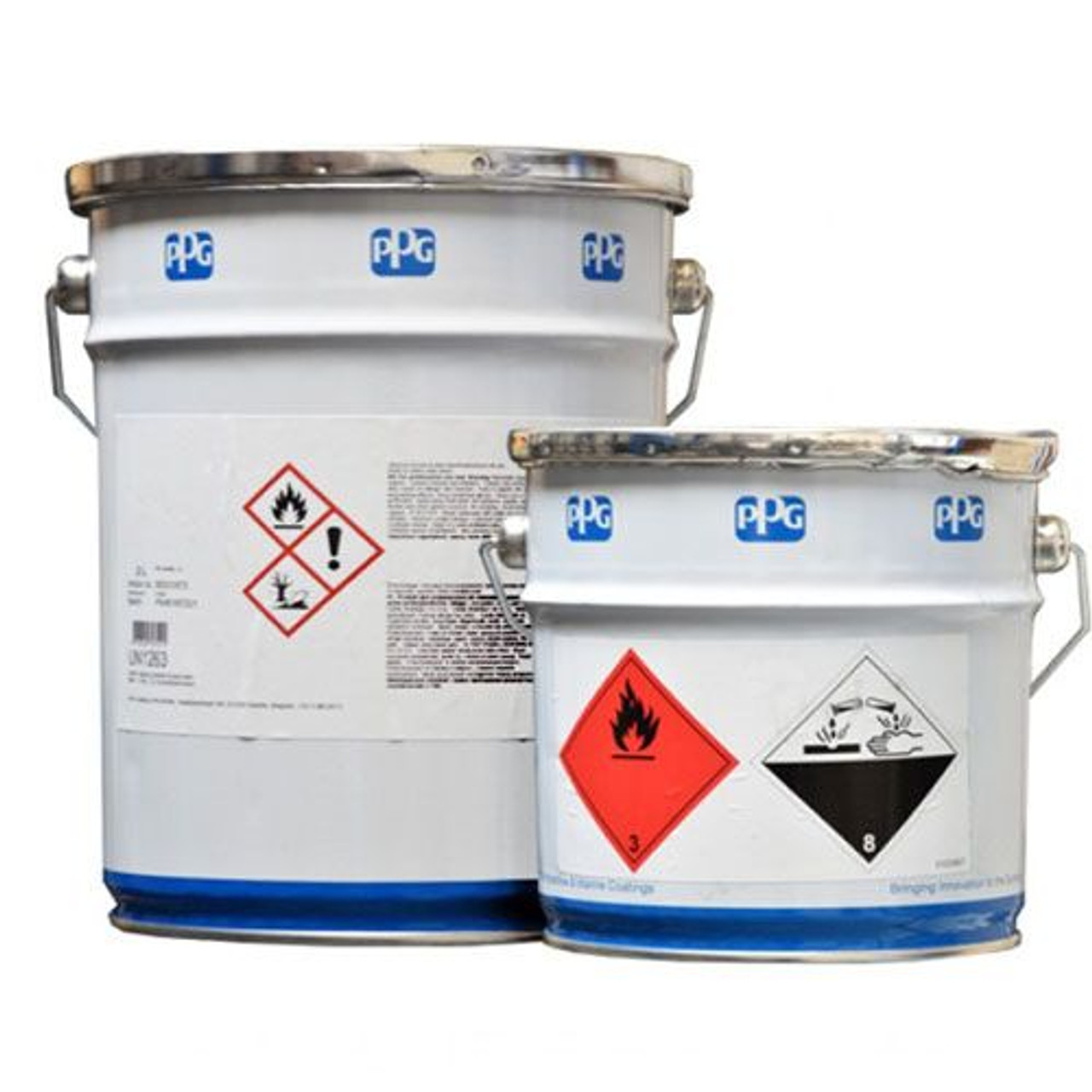How Long Does Marine Paint Last? Factors That Influence Its Lifespan
Marine paint plays a crucial role in safeguarding marine vessels from the harsh and corrosive marine environment. It serves as a protective barrier that shields the exposed surfaces of ships, boats, and other maritime structures from the damaging effects of saltwater, UV radiation, fouling organisms, and various environmental factors. Without proper protection, these elements can cause rapid deterioration, corrosion, and reduced performance of the vessel, leading to costly repairs, decreased lifespan, and compromised safety.
Marine paint acts as a shield against corrosion, which is a major concern for vessels due to constant exposure to saltwater. Corrosion occurs when the metal surfaces of the vessel come into contact with water and oxygen, leading to the formation of rust. Marine paint contains anti-corrosive properties that prevent direct contact between the metal surface and the corrosive elements, effectively inhibiting rust formation and extending the lifespan of the vessel.
Furthermore, marine paint provides protection against fouling, which refers to the accumulation of marine organisms, such as barnacles, algae, and mollusks, on the hull of the vessel. Fouling can negatively impact the vessel's performance by increasing drag, reducing fuel efficiency, and impairing maneuverability. Marine paint incorporates anti-fouling properties that deter the attachment and growth of these organisms, minimizing the negative effects and allowing the vessel to maintain its optimal performance.
Understanding the lifespan of marine paint is of paramount importance for vessel owners, operators, and maintenance personnel. It enables them to make informed decisions regarding paint selection, maintenance schedules, and budgeting for paint-related expenses. By knowing how long marine paint is expected to last under specific conditions, they can effectively plan for repainting or touch-up projects, ensuring that the vessel remains adequately protected at all times.
In this comprehensive guide we will discuss the factors that influence the lifespan of marine paint and educate stakeholders to proactively manage those factors to maximize the paint's durability. We will suggest appropriate maintenance and care practices, suitable protective measures, and give more insight on how to select high-quality paint products that are specifically formulated to withstand the anticipated environmental conditions and usage patterns of the vessel.
By extending the lifespan of marine paint, vessel owners can significantly reduce maintenance costs, enhance the overall appearance of the vessel, and minimize downtime due to repairs and repainting. This knowledge contributes to the longevity and operational efficiency of the vessel, as well as maintaining its value and preserving its structural integrity over time.
Jotun marine paint hardtop clear AS
Definition and Purpose of Marine Paint
Marine paint, also known as boat paint or yacht paint, is a specialized coating formulated to provide protection to marine vessels and structures in aquatic environments. It is specifically designed to withstand the unique challenges posed by the sea, including exposure to saltwater, UV radiation, extreme temperatures, and marine organisms.
Marine paint is composed of several key components that work together to create a durable and protective coating:
1. Binder or Resin:
The binder is the main film-forming component of the paint. It holds together the pigments and additives, providing adhesion to the surface and forming a protective layer. Common binders used in marine paint include epoxy, polyurethane, and alkyd resins.
2. Pigments:
Pigments are finely ground particles that give paint its color and provide opacity or hiding power. In marine paint, pigments also contribute to the UV resistance and corrosion protection properties of the coating. Zinc oxide and other anti-corrosive pigments are often used to enhance the paint's protective capabilities.
3. Solvents:
Solvents are used to dissolve or disperse the binder, pigments, and additives in the paint formulation. They facilitate the application of the paint by reducing viscosity and promoting even spreading. Common solvents include mineral spirits, xylene, and toluene.
4. Additives:
Various additives are incorporated into marine paint to enhance specific properties. These additives may include UV stabilizers, biocides for anti-fouling properties, flow agents to improve leveling and brushability, and anti-slip agents for safety on deck surfaces.
Jotun Marine Paint AlkydPrimer
Overview of the purpose of marine paint in protecting vessels from corrosion, fouling, and other environmental factors
The primary purpose of marine paint is to protect vessels and maritime structures from the detrimental effects of the marine environment.The sea poses numerous challenges that can lead to corrosion, fouling, and other forms of damage if left unprotected. Marine paint provides a barrier between the vessel's surface and these harmful elements, offering the following protective functions:
1. Corrosion Protection:
One of the most critical functions of marine paint is to prevent corrosion. The saltwater environment accelerates the corrosion process, which can weaken the structural integrity of the vessel. Marine paint contains anti-corrosive pigments and additives that inhibit the contact between the metal surface and the corrosive elements, protecting the vessel from rust formation and degradation.
2. Fouling Prevention:
Marine organisms, such as barnacles, algae, and mollusks, tend to attach and grow on the hull of vessels. This fouling can negatively impact the vessel's performance by increasing drag, reducing fuel efficiency, and compromising maneuverability. Marine paint incorporates anti-fouling properties that deter the attachment and growth of these organisms, keeping the hull clean and minimizing the negative effects.
3. UV Resistance:
Extended exposure to UV radiation from sunlight can cause paint to fade, chalk, and degrade over time. Marine paint is formulated with UV-resistant pigments and additives to withstand the damaging effects of UV rays, maintaining the paint's color stability, gloss, and overall appearance.
4. Protection against Environmental Factors:
Marine paint acts as a protective shield against other environmental factors, such as salt spray, humidity, extreme temperatures, and air pollution. It provides a barrier that prevents these elements from directly impacting the vessel's surface, preserving its aesthetics, performance, and longevity.
By fulfilling these protective functions, marine paint significantly extends the lifespan of vessels, reduces maintenance requirements, and enhances their overall durability and performance in challenging marine conditions.
Buy Jotun Paint online
Factors Influencing the Lifespan of Marine Paint
1. Environmental conditions
Exposure to saltwater, UV radiation, and temperature fluctuations
The marine environment exposes vessels to significant challenges that can impact the lifespan of marine paint. Saltwater, for instance, is highly corrosive and can accelerate the degradation of paint. The constant exposure to saltwater can lead to the formation of rust and corrosion on the vessel's surface, compromising the effectiveness of the paint. UV radiation from sunlight is another factor that can cause paint to deteriorate over time. The intense UV rays can lead to color fading, chalking, and breakdown of the paint film. Additionally, temperature fluctuations, especially in regions with significant seasonal variations, can stress the paint coating as it expands and contracts, potentially leading to cracking and peeling.
Impact of humidity, rainfall, and air pollution
Humidity and rainfall can affect the lifespan of marine paint. High humidity levels create a conducive environment for moisture absorption into the paint film, which can lead to blistering and peeling. Rainfall, particularly acid rain, can also contribute to paint degradation, causing discoloration and surface damage. Air pollution, such as industrial emissions and airborne pollutants, can settle on the paint surface and create a layer of grime or chemical residue. This accumulation can deteriorate the paint and impact its protective properties.
2. Quality of paint materials and application techniques
Types of marine paint and their durability
The quality and type of marine paint used play a significant role in determining its lifespan. Different types of marine paint, such as epoxy, polyurethane, and alkyd, have varying levels of durability and resistance to environmental factors. High-quality marine paints are formulated with advanced technologies and specialized ingredients that enhance their protective properties and longevity. Understanding the specific requirements of the vessel and selecting the appropriate type of marine paint can significantly impact its lifespan.
Importance of proper surface preparation and application methods
Proper surface preparation is crucial for the longevity of marine paint. The surface should be thoroughly cleaned, free from contaminants, and appropriately primed before applying the paint. Failure to prepare the surface adequately can result in poor adhesion, reduced paint durability, and premature failure. Similarly, the application techniques employed, such as brushing, rolling, or spraying, can affect the paint's performance and longevity. Following the manufacturer's guidelines and using proper application methods ensure even coverage and optimal adherence to the surface.
C. Maintenance and care
Regular cleaning and inspection
Regular cleaning and inspection of the vessel's painted surfaces are essential for maintaining the lifespan of marine paint. Cleaning removes dirt, salt residue, and other contaminants that can degrade the paint. Mild detergents or specialized marine cleaners should be used, and abrasive cleaning methods should be avoided to prevent damage to the paint film. Regular inspections allow for the early detection of any signs of paint degradation, such as cracking, peeling, or blistering. Prompt action can then be taken to address the issues before they worsen.
Prompt repair of damage or degradation
Timely repair of any damage or degradation is crucial for preserving the lifespan of marine paint. Small cracks, chips, or areas of peeling should be promptly addressed to prevent further deterioration. The damaged sections should be repaired, primed, and recoated to maintain the paint's protective integrity. Neglecting to repair such issues can lead to the spread of damage and compromise the overall performance of the paint.
By considering these factors and implementing appropriate measures, vessel owners and operators can maximize the lifespan of marine paint. This includes selecting high-quality paint, conducting proper surface preparation, using correct application techniques, regularly cleaning and inspecting the paint surface, and promptly repairing any damage or degradation. By proactively managing these factors, the durability and effectiveness of marine paint can be significantly extended, ensuring long-lasting protection for marine vessels.
SIGMA VICOTE 56 SIGMA PROTECTIVE AND MARINE COATINGS
Typical Lifespan of Marine Paint
1. General range of lifespan for different types of marine paint
The lifespan of marine paint can vary depending on several factors, including the type of paint used, environmental conditions, quality of application, and maintenance practices. While it is challenging to provide precise timelines for paint lifespan, general ranges can be identified for different types of marine paint:
a) Epoxy Paint:
Epoxy-based marine paint is known for its excellent adhesion and durability. It can provide long-lasting protection, typically ranging from 5 to 10 years, depending on the specific formulation, application quality, and environmental conditions.
b) Polyurethane Paint:
Polyurethane marine paint offers good UV resistance and color retention properties. Its lifespan can range from 3 to 7 years, again subject to factors such as application quality, exposure to environmental stressors, and maintenance.
c) Alkyd Paint:
Alkyd-based marine paint is cost-effective but generally offers a shorter lifespan compared to epoxy or polyurethane paints. It typically lasts around 2 to 5 years, depending on the factors mentioned above.
It is important to note that these lifespan ranges are estimates and can vary significantly based on the specific brand, product quality, and application conditions. Additionally, factors such as exposure to extreme weather, saltwater, and intense UV radiation can accelerate paint degradation and reduce its effective lifespan.
B. Examples of real-life scenarios and their impact on paint longevity
Real-life scenarios can provide insight into the impact of various factors on the lifespan of marine paint. For example:
1. High UV Exposure:
A vessel operating in a region with intense sunlight and minimal cloud cover will experience greater UV radiation exposure. This can lead to faster paint deterioration, including color fading, chalking, and reduced protective properties. In such cases, marine paints with enhanced UV resistance should be considered, and regular inspections and maintenance should be conducted to address any signs of paint degradation promptly.
2. Harsh Saltwater Environment:
Vessels operating in saltwater environments, such as oceans or seas, are more susceptible to corrosion and paint degradation due to the high salt content. Saltwater can penetrate the paint film, leading to accelerated corrosion and reduced paint lifespan. In these situations, marine paints with superior anti-corrosive properties should be chosen, and diligent maintenance practices should be implemented to minimize the effects of saltwater exposure.
3. Heavy Usage Patterns:
Vessels subjected to frequent use, such as commercial or charter vessels, may experience increased wear and tear on the paint surface. Constant docking, loading and unloading, and exposure to harsh weather conditions can result in accelerated paint degradation. In such cases, more frequent inspections, touch-ups, and maintenance routines may be necessary to ensure ongoing protection and extend the paint's lifespan.
C. Variations based on vessel type and usage patterns
The lifespan of marine paint can also vary based on the type of vessel and its specific usage patterns:
1. Recreational Boats and Yachts:
Paint lifespan for recreational boats and yachts can range from 3 to 10 years, depending on factors such as the type of paint used, maintenance practices, storage conditions, and frequency of use. Yachts that are well-maintained, stored in covered facilities, and receive regular cleaning and inspections tend to have longer-lasting paint.
2. Commercial Vessels:
Commercial vessels, including cargo ships, fishing vessels, and offshore platforms, often face more demanding operating conditions and higher usage rates. The lifespan of marine paint on these vessels can range from 2 to 7 years, with additional considerations for specialized coatings required for specific applications, such as anti-slip coatings on deck surfaces.
3. Naval Vessels:
Naval vessels, such as warships and submarines, require high-performance marine coatings to withstand the rigorous demands of military operations. The lifespan of marine paint on naval vessels can range from 5 to 15 years, depending on factors such as the type of paint used, vessel maintenance, and deployment patterns.
It is crucial to consider the unique requirements and operational conditions of each vessel type when estimating the lifespan of marine paint. Regular inspections, adherence to maintenance schedules, and proactive measures to address paint degradation can help optimize the lifespan and effectiveness of marine paint across all vessel types.
In summary, the typical lifespan of marine paint varies depending on factors such as paint type, environmental conditions, quality of application, and maintenance practices. Epoxy paint generally lasts 5 to 10 years, polyurethane paint lasts 3 to 7 years, and alkyd paint lasts 2 to 5 years. Real-life scenarios and vessel-specific factors can impact the paint's longevity, emphasizing the need for appropriate paint selection, diligent maintenance, and proactive measures to address paint degradation.
SIGMACOVER 256 SIGMA PROTECTIVE AND MARINE COATINGS
Extending the Lifespan of Marine Paint
a. Choosing high-quality marine paint
Selecting high-quality marine paint is crucial for extending its lifespan. Investing in reputable brands and products known for their durability and performance can ensure long-lasting protection for marine vessels. These paints are formulated with advanced technologies and superior ingredients that enhance their resistance to environmental factors, UV radiation, and corrosion. Conducting thorough research, seeking recommendations from experts, and considering the specific requirements of the vessel can help in choosing the most suitable and high-quality marine paint.
b. Proper surface preparation techniques
Proper surface preparation is essential to maximize the lifespan of marine paint. The surface should be cleaned thoroughly to remove dirt, grease, salt residue, and any existing loose or flaking paint. Depending on the condition of the surface, techniques such as pressure washing, sanding, or chemical cleaning may be employed. After cleaning, the surface should be dried completely before proceeding with paint application. Additionally, applying a suitable primer to the properly prepared surface can enhance paint adhesion and improve the overall durability of the coating.
c. Applying multiple coats and adequate drying time
Applying multiple coats of marine paint can enhance its protective properties and extend its lifespan. Each coat adds an additional layer of protection, improving the paint's resistance to UV radiation, corrosion, and other environmental factors. It is important to follow the manufacturer's guidelines regarding the recommended number of coats and drying time between each application. Rushing the paint application process or applying insufficient coats can compromise the effectiveness and durability of the paint. Allowing adequate drying time between coats ensures optimal bonding and a strong paint film.
d. Regular maintenance and inspection
Regular maintenance and inspection of the painted surfaces are essential for extending the lifespan of marine paint. This includes regular cleaning to remove dirt, salt residue, and other contaminants that can degrade the paint. Mild detergents or specialized marine cleaners should be used, and abrasive cleaning methods should be avoided to prevent damage to the paint film. Inspections should be conducted periodically to identify any signs of paint degradation, such as cracking, peeling, or blistering. Prompt action should be taken to address any issues or damages before they worsen.
e. Additional protective measures, such as using anti-fouling coatings
In addition to high-quality marine paint, additional protective measures can be implemented to extend the lifespan of the paint. For example, applying anti-fouling coatings on the underwater hull surfaces can help prevent the attachment and growth of marine organisms such as barnacles and algae. These coatings contain biocides or other additives that deter fouling and reduce the maintenance required to keep the hull clean. By minimizing fouling, the paint's lifespan can be extended, and the vessel's performance and fuel efficiency can be improved.
Other protective measures may include using sacrificial anodes or impressed current systems to protect against galvanic corrosion, installing protective film or covers on vulnerable areas during storage or transport, and implementing proper docking and mooring practices to prevent excessive abrasion or impact on the paint surface.
By implementing these measures, vessel owners and operators can significantly extend the lifespan of marine paint, ensuring long-lasting protection and reducing the frequency of repainting. This not only improves the aesthetics of the vessel but also minimizes maintenance costs and enhances its overall durability in the challenging marine environment.
Conclusion
The lifespan of marine paint is influenced by various factors. Environmental conditions such as exposure to saltwater, UV radiation, temperature fluctuations, humidity, rainfall, and air pollution can accelerate paint degradation. The quality of paint materials and application techniques, including the type of paint used and proper surface preparation, plays a significant role in determining paint durability. Maintenance and care, such as regular cleaning, inspection, and prompt repair of damage or degradation, are crucial for maintaining the lifespan of marine paint.
Understanding these factors influencing the lifespan of marine paint, is crucial for vessel owners and operators. By selecting high-quality paint, conducting proper surface preparation, applying multiple coats, and following regular maintenance routines, the lifespan of marine paint can be significantly extended. This not only ensures the long-lasting protection of marine vessels but also reduces maintenance costs and enhances their overall durability in challenging marine environments. In conclusion, marine paint is a specialized coating formulated to protect marine vessels and structures from corrosion, fouling, UV radiation, and other environmental factors. Its composition includes binders, pigments, solvents, and additives that work together to create a protective barrier on the vessel's surface. Marine paint plays a vital role in preserving the integrity, appearance, and longevity of marine assets, ensuring their continued functionality and safety in demanding marine environments.
Frequently Asked Questions
1. Can I use regular paint instead of marine paint on my boat?
Regular paint is not recommended for use on boats as it does not provide the necessary protection against marine-specific challenges such as corrosion, UV exposure, and fouling. Marine paint is formulated with specialised ingredients to withstand the unique conditions of the marine environment.
2. What are the different types of marine paint?
There are different types of marine paint, including antifouling paint (to prevent marine growth on the hull), topside paint (for above the waterline areas), bottom paint (for below the waterline areas), primers, and specialty coatings such as deck paint or bilge paint.
3. How do I prepare the boat's surface for painting?
Surface preparation is crucial for a successful paint job. It typically involves cleaning the surface, removing any loose or flaking paint, sanding or scraping to create a smooth and clean surface, and applying primers as necessary. Follow the specific instructions provided by the paint manufacturer.
Related Articles
What is Marine Paint Used for?
Finding the Best Waterproof Paint for Cement Surfaces

